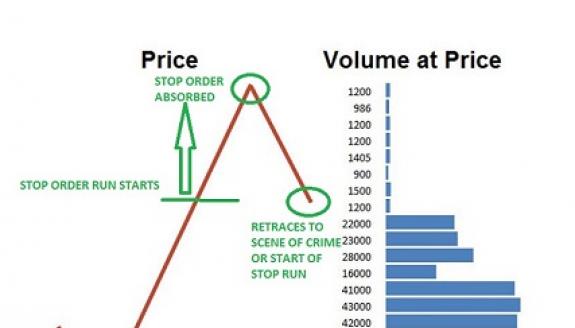
FXTM Calculator is an invaluable tool when trading Forex. This tool can help you keep track of the market and make the most of your deposits. It's easy to use. It will automatically fill in the rest of the information once you have entered the properties.
FXTM has many calculators. There are two types of calculators available at FXTM: the Profit calculator and Multi-Target. They are both extremely easy to use and free. They allow you to calculate the profit based on a number of factors such as the currency pairs, the amount of money you are trading, and your lot size. The Profit calculator can also be used for determining the maximum profit you can expect to make from a trade. Multi-Target calculators are particularly helpful in determining the best time of closing a position. It will also calculate profit and loss automatically based on what you input.
FXTM also offers a Pip Value Calculator. This tool calculates a pip's value using market rates and the lot size. This tool is particularly helpful for clients that do not have zero-point spreads. It can also be used for determining fractions of a pip. You can use it to determine the fraction of a pip for indices or minor pairs. You can customize it to match your website color scheme.

FXTM's Currency Converter is another useful tool. It converts your base currency into the quote currency. It calculates the profit that you can make based off your closing and entry prices. It also calculates pip values for major currencies like the Japanese yen. It can be used to determine pips for metals or live market rates.
FXTM provides a copy trading facility. This service allows traders to copy their trades. The copy trading service is popular among beginners as well as people who don’t have the time and resources to develop strategies. The service also provides webinars and trading strategies. For individuals with $100 or less opening balance, the service is free.
There is a stop loss feature that allows you to automatically close your position when it reaches a specific value. Stop-outs range from 20% to 50%. The Stop Loss feature also prevents you from making a large loss. A consistent profit is essential. A modest gain percentage of 2% per trade could result in large equity.
Beginners love the FXTM Invest Copy Trading Service. It allows you trade more that 5,000 trading strategy. Trader can copy trades made by strategy providers, and only pay commissions if they are successful. The service can be accessed on mobile or desktop devices.

FXTM has excellent customer support. You can reach FXTM customer service 24 hours a day in 18 languages. It offers trading signals and trading guides as well as economic calendars. The site also offers trading tutorials, educational tools and other resources to help forex traders start. The daily market analysis of the company allows beginners to see the real world consequences of news events. It also offers trading tips based in technical analysis.
FAQ
What is the difference in marketable and non-marketable securities
The key differences between the two are that non-marketable security have lower liquidity, lower trading volumes and higher transaction fees. Marketable securities on the other side are traded on exchanges so they have greater liquidity as well as trading volume. These securities offer better price discovery as they can be traded at all times. However, there are some exceptions to the rule. There are exceptions to this rule, such as mutual funds that are only available for institutional investors and do not trade on public exchanges.
Marketable securities are less risky than those that are not marketable. They generally have lower yields, and require greater initial capital deposits. Marketable securities can be more secure and simpler to deal with than those that are not marketable.
A large corporation may have a better chance of repaying a bond than one issued to a small company. The reason for this is that the former might have a strong balance, while those issued by smaller businesses may not.
Because they are able to earn greater portfolio returns, investment firms prefer to hold marketable security.
How do people lose money on the stock market?
The stock exchange is not a place you can make money selling high and buying cheap. You can lose money buying high and selling low.
The stock exchange is a great place to invest if you are open to taking on risks. They would like to purchase stocks at low prices, and then sell them at higher prices.
They believe they will gain from the market's volatility. They could lose their entire investment if they fail to be vigilant.
What's the difference between a broker or a financial advisor?
Brokers help individuals and businesses purchase and sell securities. They take care all of the paperwork.
Financial advisors are specialists in personal finance. They help clients plan for retirement and prepare for emergency situations to reach their financial goals.
Banks, insurance companies and other institutions may employ financial advisors. They may also work as independent professionals for a fee.
If you want to start a career in the financial services industry, you should consider taking classes in finance, accounting, and marketing. Also, it is important to understand about the different types available in investment.
What is security in the stock market?
Security is an asset which generates income for its owners. Most common security type is shares in companies.
A company may issue different types of securities such as bonds, preferred stocks, and common stocks.
The earnings per share (EPS), as well as the dividends that the company pays, determine the share's value.
A share is a piece of the business that you own and you have a claim to future profits. If the company pays a dividend, you receive money from the company.
You can sell shares at any moment.
Statistics
- Ratchet down that 10% if you don't yet have a healthy emergency fund and 10% to 15% of your income funneled into a retirement savings account. (nerdwallet.com)
- Individuals with very limited financial experience are either terrified by horror stories of average investors losing 50% of their portfolio value or are beguiled by "hot tips" that bear the promise of huge rewards but seldom pay off. (investopedia.com)
- The S&P 500 has grown about 10.5% per year since its establishment in the 1920s. (investopedia.com)
- For instance, an individual or entity that owns 100,000 shares of a company with one million outstanding shares would have a 10% ownership stake. (investopedia.com)
External Links
How To
How to Invest Online in Stock Market
The stock market is one way you can make money investing in stocks. There are many methods to invest in stocks. These include mutual funds or exchange-traded fund (ETFs), hedge money, and others. The best investment strategy depends on your investment goals, risk tolerance, personal investment style, overall market knowledge, and financial goals.
Understanding the market is key to success in the stock market. Understanding the market and its potential rewards is essential. Once you know what you want out of your investment portfolio, then you can start looking at which type of investment would work best for you.
There are three main categories of investments: equity, fixed income, and alternatives. Equity is ownership shares in companies. Fixed income can be defined as debt instruments such bonds and Treasury bills. Alternatives include commodities and currencies, real property, private equity and venture capital. Each option has its pros and cons so you can decide which one suits you best.
Once you figure out what kind of investment you want, there are two broad strategies you can use. The first is "buy and keep." This means that you buy a certain amount of security and then you hold it for a set period of time. Diversification, on the other hand, involves diversifying your portfolio by buying securities of different classes. If you buy 10% each of Apple, Microsoft and General Motors, then you can diversify into three different industries. Multiple investments give you more exposure in different areas of the economy. Because you own another asset in another sector, it helps to protect against losses in that sector.
Risk management is another crucial factor in selecting an investment. Risk management can help you control volatility in your portfolio. If you are only willing to take on 1% risk, you can choose a low-risk investment fund. If you are willing and able to accept a 5%-risk, you can choose a more risky fund.
The final step in becoming a successful investor is learning how to manage your money. A plan is essential to managing your money. A good plan should include your short-term, medium and long-term goals. Retirement planning is also included. Sticking to your plan is key! Keep your eyes on the big picture and don't let the market fluctuations keep you from sticking to it. Stay true to your plan, and your wealth will grow.